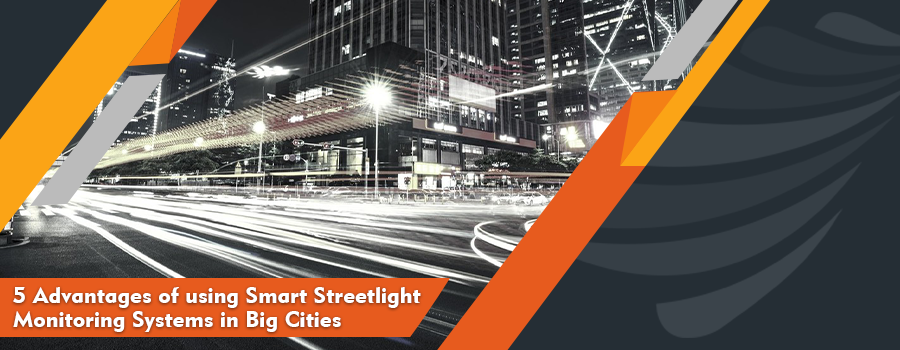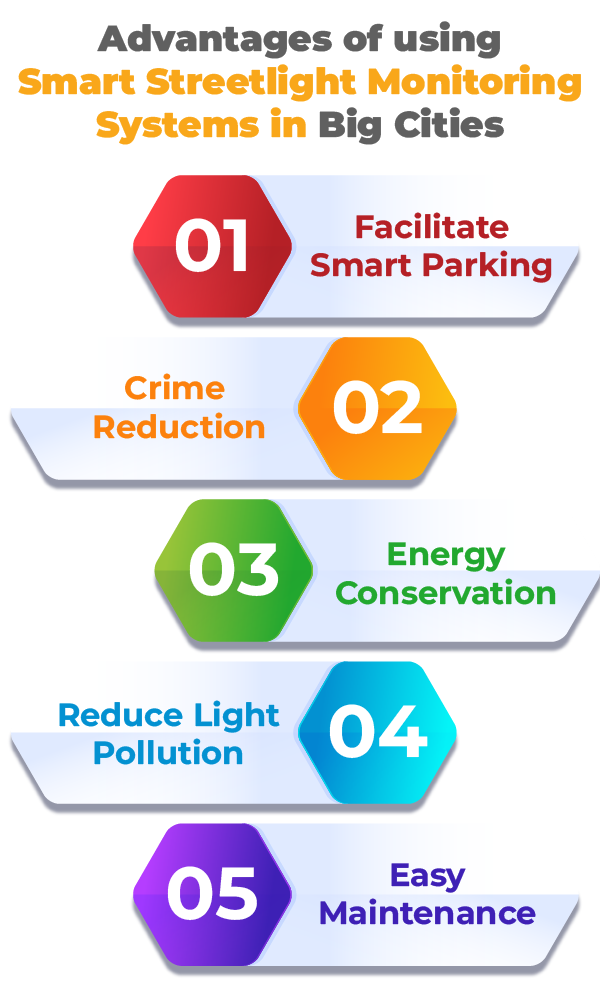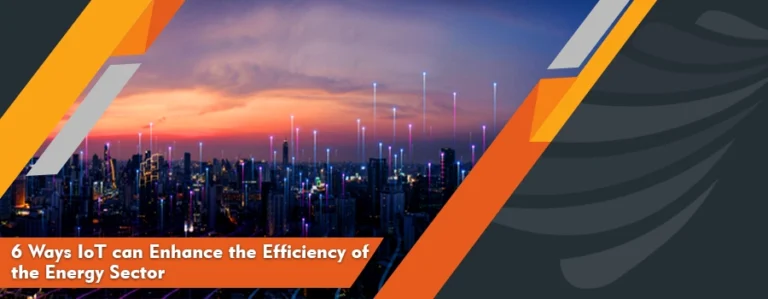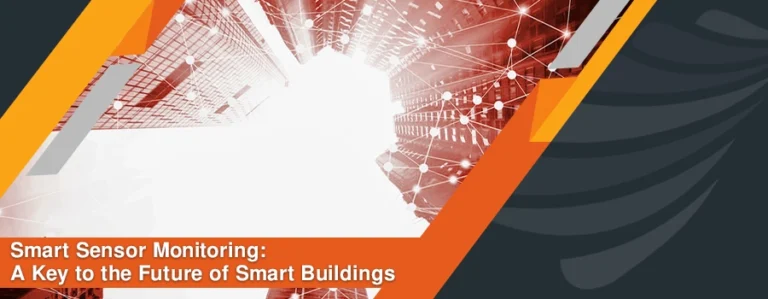Today, around 4.4 billion people live in cities, equivalent to 56% of the global population. This population expects to double by 2050. Therefore, energy production needs to increase to meet public demand, services, and safety. Additionally, fossil fuels are diminishing, which leads to an increase in inflation and energy cost. All these issues highlight the need for better management and implementation of smart solutions that conserve less energy and meet the increased energy demand.
The smart streetlight monitoring system effectively reduces energy consumption and increases public well-being and safety. It is not only economically friendly but also easy to implement by the local government.
What is Smart Streetlight Monitoring System?
Streetlights are a significant part of the infrastructure development of cities. It helps provide a better vision of streets, the public, signs, and roads at dark times.
Smart streetlight monitoring systems allow automatic switching off and on of streetlight lamps as per the need.
The design of smart streetlight monitoring systems relies on three modules: light-dependent resistors (LDR), microcontrollers, and transmission modules. The LDR module allows the detection of the surrounding light. The microcontroller, such as Arduino UNO, Raspberry Pi, and NodeMCU, then processes the collected data from LDR. The microcontroller sends results to the transmission module, which sends data to the control center via Wi-Fi connectivity. Here, the system monitors each streetlight’s status and regulates its operations.
Advantages of using Smart Streetlight Monitoring Systems in Big Cities
– Facilitate Smart Parking
The smart street light monitoring systems can integrate with smart parking systems such as ParkSmart. The integration allows detection of the parking spaces and provides navigation to the drivers to the open space spots. It helps to reduce traffic congestion, accidents, mismanagement, and security issues. The system can send alerts after detecting emergencies, including sudden extreme weather conditions, crowd detection, possible crime, active shooters, and many more. Installing an overhead system also needs less cost to implement; hence, it is feasible.
Integrating both systems allows the installation of sensors for detecting parking slots on or in streetlights. The smart overhead system easily detects hurdles on the garage, cycle path, bike lane, or bus lane and predicts parking issues caused by vehicles parked incorrectly. The measured data then send to the control center via the mobile network. The control center uses sensor data to calculate the parking space occupancy. It alerts the drivers to locate parking spaces and the traffic enforcement offices to detect illegally parked cars.
Via vehicle identification, smart streetlight monitoring systems can also help to understand the usage of different lanes and public transportation. Consequently, it becomes possible to optimize and adjust traffic in real time. In turn, it reduces congestion and also air pollution.
– Crime Reduction
Crime reduction is one of the major goals of the stakeholders, including the government. Therefore, there is an increasing shift towards using smart street light monitoring systems. One of the main reasons is it allows enhanced public safety and security. It helps to develop a network canopy that allows more data processing. In turn, it becomes possible to implement a smarter system that ensures public safety. To illustrate, it provides better visibility to drivers and passengers. Also, with advanced techniques, drivers can receive alerts that reduce the chances of accidents. The system can also alter the colors of LEDs in case of emergency or safety concerns.
Also, smart light monitoring systems have a huge application in homes and offices. The main function is it detects the presence of an individual. In turn, it changes its brightness level or color in every space where someone enters. Even the control of switching on and off is easy to perform via smartphone.
– Energy Conservation
It is clear that due to increased traffic flow and population, there is a need to shift from traditional street lighting systems to smart streetlight monitoring systems. One of the reasons is traditional street lights work on manual handling. It even becomes difficult to shut down street lights on a huge scale to conserve energy. With IoT connectivity, this advanced system collects, evaluates, monitors, and sends real-time data to city planners, civil engineers, and project managers. It allows them to utilize actionable data in a better way for development, such as enhancing lighting infrastructure.
When there is no motion, street lights turn off. In this way, it also reduces energy consumption. Further, when using advanced lighting technology like LEDs, energy consumption reduces by 90% compared to traditional incandescent bulbs.
On the other hand, LEDs have a better life, saving costs for replacement and repair. The amount is then easy to use in different development projects, such as improvising the urban infrastructure.
– Reduce Light Pollution
As a result of the increasing light pollution issue, there is an increase of interference in astronomical research, disruption of an ecosystem, washout of starlight at night, waste of energy, and even adverse health effects.
At night, when there is an increase in light, melatonin production lowers. This results in fatigue, stress, sleep deprivation, headache, disturbed circadian rhythms, and other health issues.
Streetlights contribute a significant role in light pollution. With smart technology, lights are switched off automatically during the day, and at night when there is no moving vehicle or walking passenger on the street, they are also turned off. The implementation of a smart streetlight monitoring system overcomes these issues.
– Easy Maintenance
Each lamp of the smart streetlight monitoring system has a different ID. It allows us to pinpoint them easily. Facility managers control the system remotely and keep track of driving circuits and electrical consumption. They monitor lamp status; therefore, timely and cost-effective solutions implement in case of any issue like a lamp fuse or breakdown.
Even the light has a feature to dim or brighten, corresponding to the intensity of moonlight. Even in different weather conditions like for or rain, it changes its status accordingly. It also helps to increase the life of LEDs, subsequently needing less maintenance.
In a Nutshell…
Smart streetlight monitoring systems are advanced solutions to meet the increasing need for energy production. This IoT-based system is cost-effective and also needs less maintenance. The feature of changing light intensity and automatic switch on and off according to the need allows it to conserve energy. It is also easy to integrate with other smart solutions, such as smart parking, to provide advanced solutions. Also, such implementations help easily overcome light pollution, increased crime rate, accidents, energy crises, public health and safety, and parking issues.






